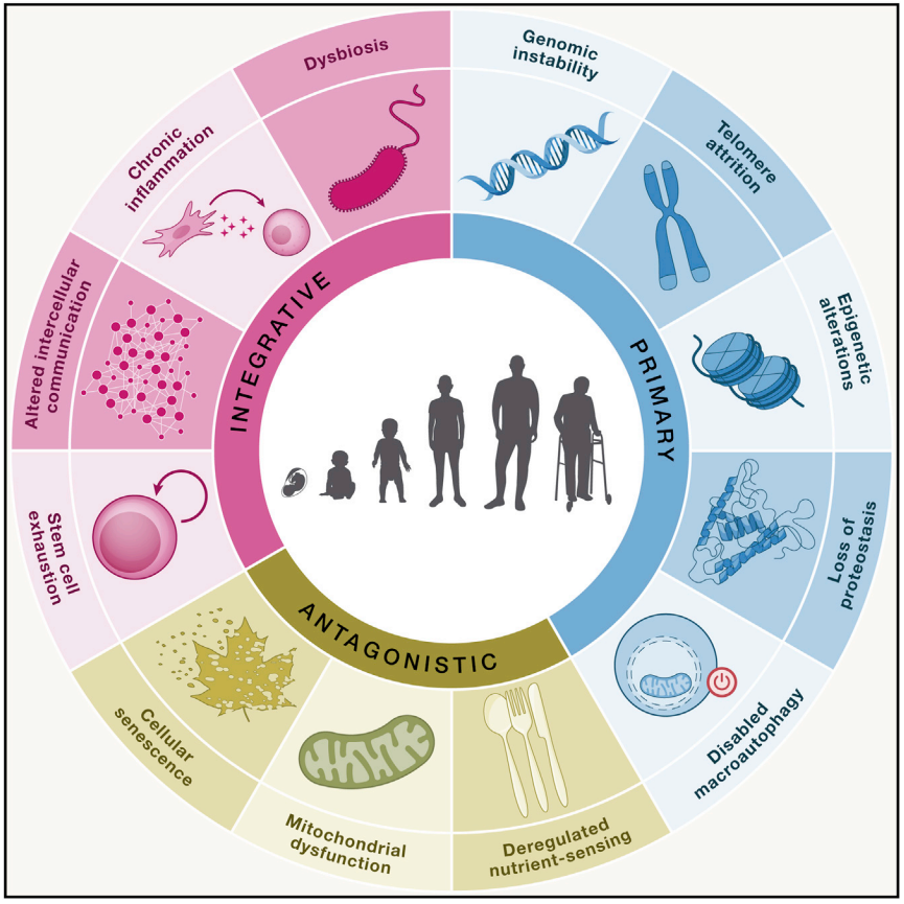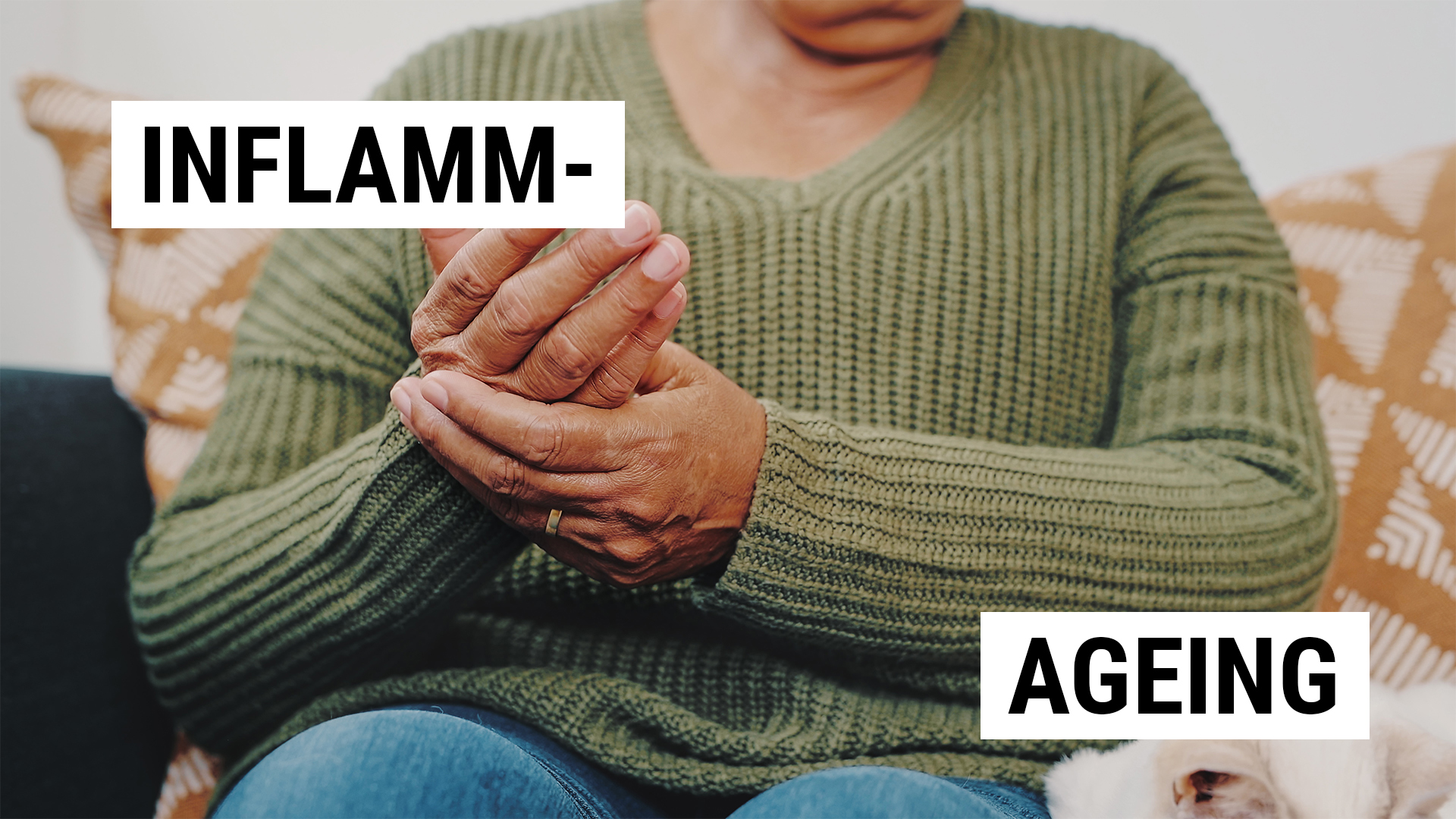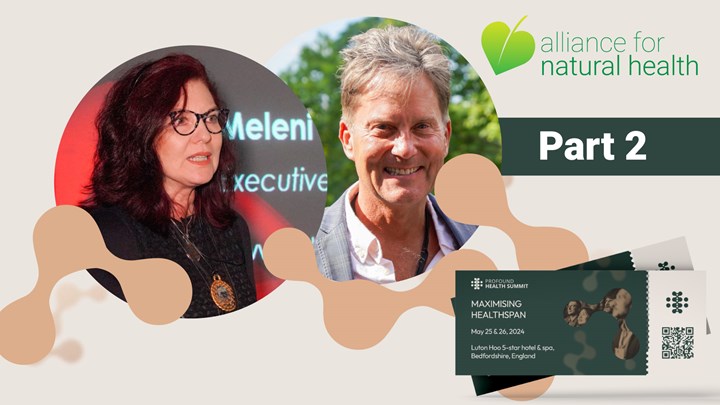Content Sections
By Rob Verkerk, ANH founder, executive & scientific director, ANH-Intl and ANH-USA
TOPLINE
- Inflammation underlies chronic disease. As we age if inflammation isn't controlled it increases as we age and is often the underlying cause of death, leading to it being referred to as 'inflammaging'
- Inflammation affects our energy factories, mitochondria, the length of our telomeres - fast-tracking ageing and reduces our body's ability to housekeep and get rid of toxic products of our metabolism
- One of the leading causes of inflammaging is the Standard Western Diet (SAD) driving inflammaging and the development of chronic disease
- There are some amazing small molecules that are heavy hitters when it comes to reducing and reversing the effects of inflammaging, known as nucleotides and peptides
What do people who suffer from heart disease, cancer, obesity, type 2 diabetes, arthritis, Alzheimer’s disease, and most of the other chronic diseases that now plague society, have in common? What’s the condition that most commonly affects older age groups that is a key underlying cause of these diseases?
The answer to both of these questions is: inflammation. Not the healthy, transient, inflammatory process generated by our immune systems that happens every time we insult our tissues or expose ourselves to foreign microbes or agents. This kind of healthy inflammatory response is not only essential to our survival by targeting non-self microbes and other agents but it’s also part of our natural, healing response that often includes repair of damaged cells and tissues.
Inflammation – the type that doesn’t (easily) go away in older folk
Here, we’re talking about a different condition that wasn’t intended by nature, and one to which we’re not well adapted. The condition is persistent, systemic, low grade, sterile inflammation, and unless we take careful steps to avoid it, it ramps up as we get older and represents the underlying cause of most of our deaths. That’s why it’s increasingly referred to as inflammaging.
It’s thought of as sterile because there’s no pathogen driving it. It’s also pro-inflammatory and contributes to sustained oxidative stress – an inflammatory state that persists in which reactive oxygen species aren’t sufficiently quenched by antioxidants in the body and they go on to wreak havoc on cell membranes, tissues and even DNA. But there's more to it. We suffer energy loss because the mitochondria, the energy factories in our cells, don't work as well as they should and become smaller and fewer in number. We lose years of life because inflammaging causes premature attrition of our telomeres—the end caps on our chromosomes that control our lifespan. The clean-up we rely on to get rid of toxic products of metabolism—autophagy—starts to fail, especially if we keep eating too often. In fact, a whole bunch of things of not-so-nice things start to happen, all the things that make old people less functional than younger ones, that contribute to our increased risk of chronic diseases, and ultimately to our deaths. These areas have been recently identified as the 12 hallmarks of aging (see Fig. 1 below).

Figure 1. Current perspective on the hallmarks of aging.
This kind of persistent, low grade inflammatory response was either non-existent or very rare among our ancestors prior to the Industrial Revolution, and it’s being driven by our modern lifestyles. As it affects so many different parts of, and processes within, our bodies, there’s no magic, silver bullet that can fix it. In fact, it’s our failure to find (or at least find consensus over) universal solutions to systemic, low grade inflammation that is one of the main reasons we’re so blighted by the current crop of killer diseases, including heart disease, cancer, and metabolic diseases like type 2 diabetes and obesity.
Tricky but far from impossible to reverse
That’s not to say that there aren’t solutions. There are, but, to-date, nearly all of them lie outside the pharmaceutical-dominated mainstream medical system. That means the vast majority of people, including most mainstream medical doctors, just don’t know about them or at not equipped to offer the required clinical support or advice.
That’s why I’m excited to be joining leading doctors, practitioners and other scientists this week at a conference organised by the International College of Integrative Medicine (ICIM) in New Orleans, where we’ll be spending 3 days (Friday through to Saturday) exploring the topic of ‘inflammaging’. To be more specific, this term refers to an area of very active research and clinical application, at least in integrative medicine circles, that tackles this age-related, progressive increase in chronic, proinflammatory status that’s so intimately linked with 21st century diseases—the major chronic and killer diseases of our era.
Drivers of inflammaging
There is one element that is unequivocally accepted as a driver of these pro-inflammatory processes, and that’s the modern, Western diet, especially what’s become known as the Standard American Diet (SAD). SADly, this diet is now consumed by an ever growing number of people around the world, regardless of culture. While there’s also growing recognition, even in mainstream medical circles, that healthy dietary patterns, rich in anti-inflammatory ‘phytonutrients’, including the colourful pigments from different vegetables, mushrooms, plants and algae (e.g. seaweeds), are key to reversing a pro-inflammatory state, such diets are often seen by mainstream medics as more preventative than curative. In other words, if you’ve already developed a disease linked to inflammaging, current medical wisdom says it’s too late to use a dietary approach. And that’s a view that’s been carefully framed by pharmaceutical interests, ensuring physician and public attention moves to profitable drugs and away from healthy foods from which Big Pharma can’t profit.
But this view is, frankly, flawed. This is evidenced by a rapidly expanding literature (examples given in the following hyperlinks) showing that specific chronic conditions or diseases, ranging from obesity and type 2 diabetes, through to certain types of cancer (e.g. here and here) and cardiovascular disease or risk factors (e.g. atherosclerosis, hypertension [high blood pressure]), can be halted or reversed through dietary and lifestyle changes.
Other than the role of dietary ingredients as anti-inflammatory agents, there’s also increasing recognition that the amount and timing of our eating is key. Amongst the earliest recognition of this came from the discovery that rationing and the subsequent caloric restriction during WWII reduced the prevalence of metabolic diseases such as hypertension, heart disease and diabetes. Put simply, most people in the industrialised world eat too much, too often and the wrong kinds of foods.
Another key finding concerns the key role of appropriate microbial communities in our gut (the gut microbiome). Gut microbes (which approximate or even exceed the number of human cells in our bodies) depend on ingredients like anti-inflammatory polyphenols in the diet, as well as butyrate on the mucosal interface.
High molecular weight dietary polyphenols that are found in many coloured vegetables and fruits are themselves not well absorbed by our gut. Instead, they are transformed by the gut microbiota into beneficial, bioactive, anti-inflammatory metabolites. The gut microbiota also regulate inflammation in the gut through their role in transforming soluble fibres to short-chain fatty acids (butyrate) in the mucosal layer of the gut. In many people, especially those consuming highly processed, Western diets, levels of butyrate and dietary intakes of fibre and polyphenols are sub-optimal or deficient.
When it comes to ways of eating that can wind back the clock of your biological age, enliven your mitochondria, optimise your gene expression and reduce your risks of chronic diseases, we draw your attention to our book Reset Eating that’s packed with information and recipes.
But it doesn’t stop there—with the diet. Getting on top of inflammaging goes beyond a wholesome, healthy diet.
At ICIM’s Inflammaging conference many of us will be covering specific issues that are at the leading edge of integrative medicine clinical practice and research. This includes a range of additional, non-pharmaceutical strategies for reducing inflammation or winding back biological age, including through the use of frequency medicine (Dr William Pawluk), ozone therapy (Dr Robert Rowen), melatonin (Russel Reiter PhD), and, on my part, the use of two groups of small molecules that deliver big effects, namely dietary nucleotides and naturally-occurring short peptides.
Nucleotides and peptides
I'll give you here a sneak peak on what I'll be talking about here in New Orleans. Nucleotides are key building blocks of the nucleic acids RNA and DNA and are comprised of 3 chemical components: a ribose sugar, a nitrogenous base (that make up the 4 letter codes of DNA and RNA) and one or more phosphate groups. Naturally-occurring short peptides are fragments of proteins made up of residues of two to generally less than 10 amino acids, linked by peptide bonds, that are key molecular signalling molecules that mediate a huge array of functions within animal bodies, including our own.
Nucleotides and naturally-occurring short peptides delivered as dietary or food supplements are heavy hitters when it comes to preventing or reversing inflammaging. But their benefits are still not widely known, even in the world of integrative medicine. Both groups are key molecules that are fundamental to life, and we’ve written about them recently (here and here).
When it comes to dietary nucleotides, these are often regarded as conditionally essential nutrients, the conditions including early life (hence their presence in breast milk and now added in synthetic form to infant formula), during severe infections or immune challenges, when suffering gut dysbiosis, and during and after very intense or prolonged physical activity. The reason we need to get nucleotides in our diet under such conditions is because the small amounts produced either within our bodies (de novo synthesis) or gathered from breaking down RNA and DNA in old cells (via the so-called salvage pathway), are insufficient to meet the need for creating new cells owing to very rapid growth, cellular replacement or greatly upregulated immune system activity.
In an adult, our immune systems and our guts are two areas with the greatest cellular turnover, and nucleotides provide vital building blocks needed for DNA replication and for RNA production to support protein synthesis at different stages of the cell cycle.
>>> Read Rob Verkerk’s article on the case for conditional essentiality of nucleotides in Food Magazine, 4 September 2020.
If we’re deficient in nucleotides during times of high demand (which includes any period of sustained or chronic stress, be it physical, psychological or immunological) we simply can’t make enough new cells. If we can’t make enough immune cells our immune system doesn’t work to its full capacity. If we can't make enough new cells in a damaged gut, we can’t repair ourselves fast enough. If we don't offer sufficient nucleotides to our gut microbiota, these vital commensals can't reproduce fast enough and can't work adequately for our benefit.
What’s fascinating, as we learn more about nucleotides through emerging research, is that they have an even wider range of benefits than simply facilitating the production of new cells. Among recent discoveries are the cancer protective role of nucleotides (that may in part be mediated by allowing proper immune function) and their likely role in halting or even reversing biological ageing. These are subjects I will be exploring in my presentation tomorrow in New Orleans.
Short-chain peptides may be small molecules made up of 2 to typically less than 10 amino acids linked by peptide bonds, but they have a huge array of functions in the body. One of the most interesting in relation to inflammaging is their ability to reduce the rate of telomere attrition and trigger stem cells, these being two key areas of the anti-ageing Holy Grail that, as far as we are aware, no other group of compounds act upon.
The trouble is that Big Pharma is well and truly on the peptide bandwagon – recognising just how much can be done with these small signalling molecules. Pharma has long been interested in the antibiotic and antimicrobial properties of certain peptides, but is now investigating their use to treat neurodegenerative conditions and cancer, as well as their use in vaccines. Some of pharma’s research endeavours have been disastrous, as they stray away from the naturally-occurring peptides produced in nature and in animal systems.
Pharma’s interest and its rocky track record of safety with small peptides spells a challenge for those of us interested in their use in supplements, which will always ensure lower cost and more universal access. One way this has already manifested is by the inclusion of 22 short peptides by the US Food and Drug Administration (FDA) on a ‘naughty list’ (Category 2 Bulk Substances) of problem ‘drugs’ made by compounding pharmacies. It is entirely wrong that most of these peptides have been added to this list on the grounds, as per the FDA claim, of inadequate safety information or safety concerns (immunogenicity). We will be doing all we can through our US arm, ANH-USA, to fight for exclusion of naturally-occurring and compounded peptides from such listings, which could be the FDA’s prelude to challenging their use as dietary supplements.
End note
We hope this article helps you to recognise just how important it is to avoid or reverse persistent, low grade inflammation associated with ageing, because it's the central yet silent driver of our current chronic disease crisis. And it is almost entirely ignored by primary care physicians working in the mainstream medical community.
That means the responsibility is ours, and currently it is only practitioners of integrative medicine that are in a position to offer protocols and solutions. We look forward to offering some of these approaches and protocols in a follow-up piece in two weeks time, benefiting from expert inputs delivered at ICIM’s Inflammaging conference.
Please share this article widely with your networks.
>>> If you’re not already signed up for the ANH International weekly newsletter, sign up for free now using the SUBSCRIBE button at the top of our website – or better still – become a Pathfinder member and join the ANH-Intl tribe to enjoy benefits unique to our members.
>> Feel free to republish - just follow our Alliance for Natural Health International Re-publishing Guidelines
>>> Return to ANH International homepage








Comments
your voice counts
There are currently no comments on this post.
Your voice counts
We welcome your comments and are very interested in your point of view, but we ask that you keep them relevant to the article, that they be civil and without commercial links. All comments are moderated prior to being published. We reserve the right to edit or not publish comments that we consider abusive or offensive.
There is extra content here from a third party provider. You will be unable to see this content unless you agree to allow Content Cookies. Cookie Preferences